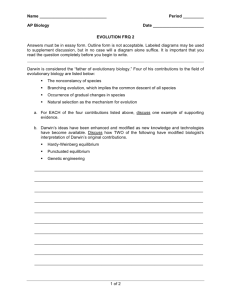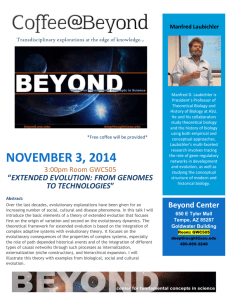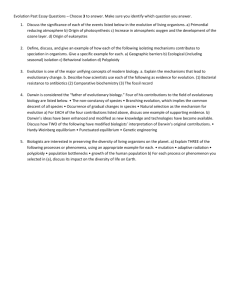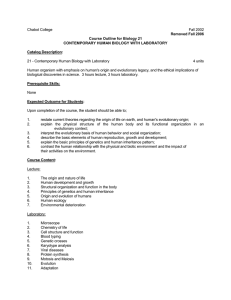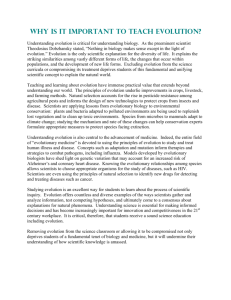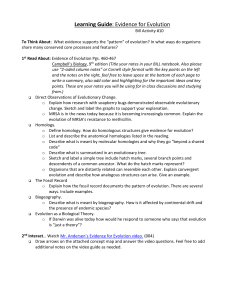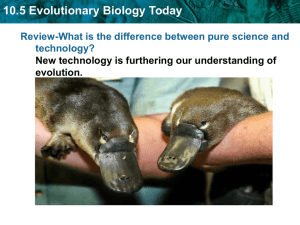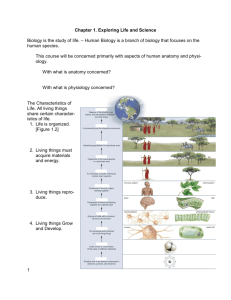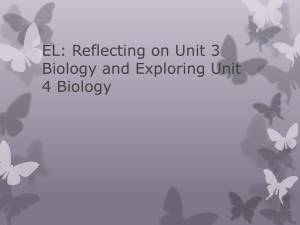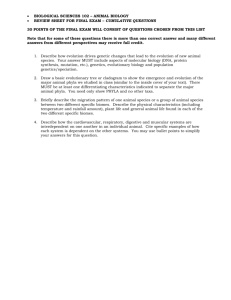AP Biology Summer work 2013 AP BIO-summerwork
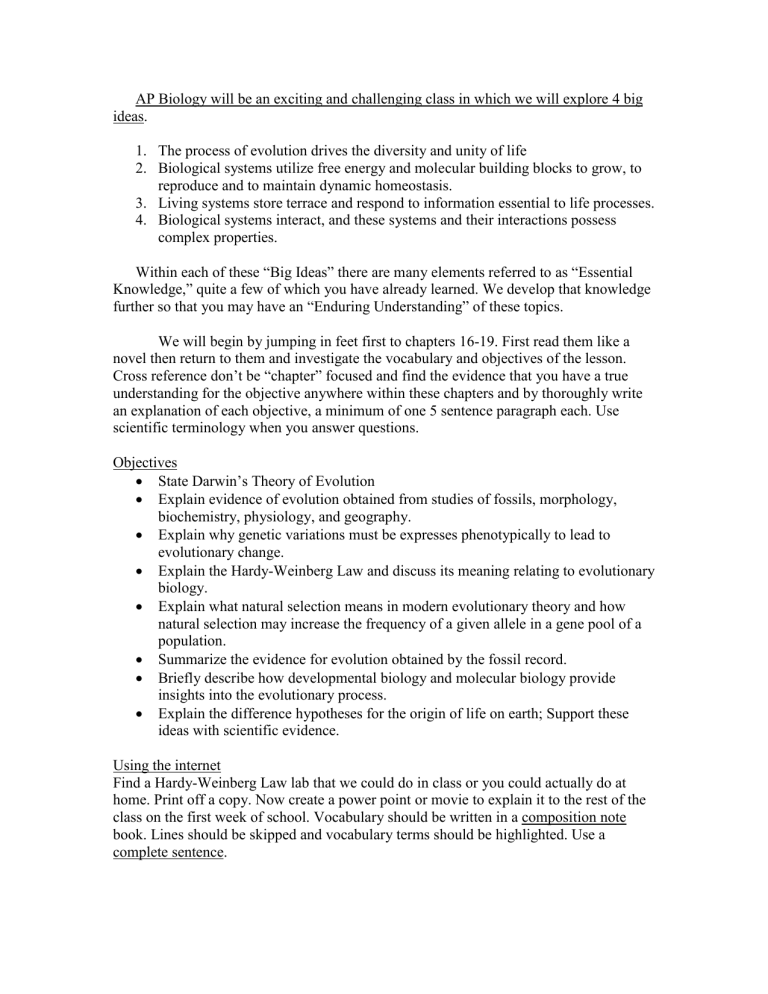
AP Biology will be an exciting and challenging class in which we will explore 4 big ideas.
1.
The process of evolution drives the diversity and unity of life
2.
Biological systems utilize free energy and molecular building blocks to grow, to reproduce and to maintain dynamic homeostasis.
3.
Living systems store terrace and respond to information essential to life processes.
4.
Biological systems interact, and these systems and their interactions possess complex properties.
Within each of these “Big Ideas” there are many elements referred to as “Essential
Knowledge,” quite a few of which you have already learned. We develop that knowledge further so that you may have an “Enduring Understanding” of these topics.
We will begin by jumping in feet first to chapters 16-19. First read them like a novel then return to them and investigate the vocabulary and objectives of the lesson.
Cross reference don’t be “chapter” focused and find the evidence that you have a true understanding for the objective anywhere within these chapters and by thoroughly write an explanation of each objective, a minimum of one 5 sentence paragraph each. Use scientific terminology when you answer questions.
Objectives
State Darwin’s Theory of Evolution
Explain evidence of evolution obtained from studies of fossils, morphology, biochemistry, physiology, and geography.
Explain why genetic variations must be expresses phenotypically to lead to evolutionary change.
Explain the Hardy-Weinberg Law and discuss its meaning relating to evolutionary biology.
Explain what natural selection means in modern evolutionary theory and how natural selection may increase the frequency of a given allele in a gene pool of a population.
Summarize the evidence for evolution obtained by the fossil record.
Briefly describe how developmental biology and molecular biology provide insights into the evolutionary process.
Explain the difference hypotheses for the origin of life on earth; Support these ideas with scientific evidence.
Using the internet
Find a Hardy-Weinberg Law lab that we could do in class or you could actually do at home. Print off a copy. Now create a power point or movie to explain it to the rest of the class on the first week of school. Vocabulary should be written in a composition note book. Lines should be skipped and vocabulary terms should be highlighted. Use a complete sentence.
Big Idea #1 Vocabulary Terms
Adaption
Analogous structures
Biogeography
Catatrophism
Comparative morphology
Descent with modification
Endemic species
Evolution
Fitness
Fossilization
Gene pool
Geologic time scale
Homologous structures
Fossils
Speciation
Reproductive isolation
Cladogram
Lastly, did you see biased perspectives used within this text? Respond in one paragraph or more.
Mindy Gatrell gatrellm@bethel.k12.oh.us
937-776-4242
Webpage will be created as we go. Utilize this information
Supplies
Text
2 Composition Notebooks
1 vocab
1 lab
1 Spiral notebook
Additional Paper
Pencils
Colored pencils
Index cards
Large 3 ringed binder
Highlighters
Macroevolution
Morphological
Convergence
Morphological Divergence
Natural selection
Phylogeny
Plate tectonics
Population
Radiometric dating
Species
Theory of uniformity
